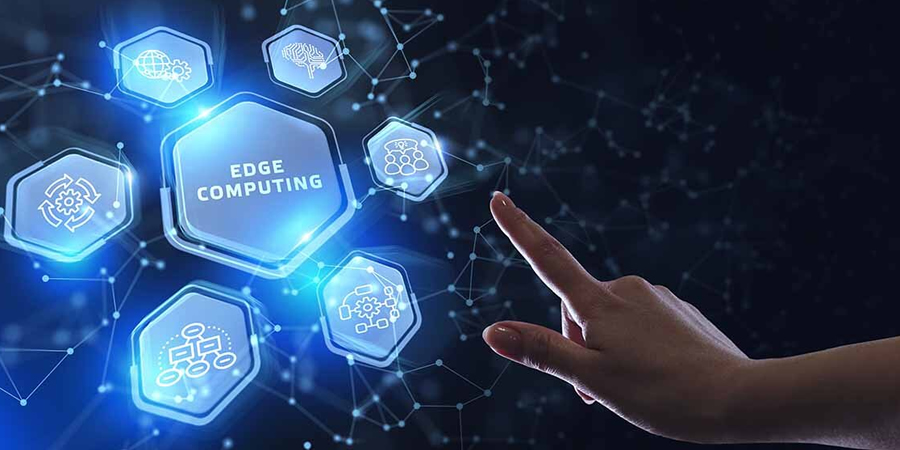Known with many names such as ‘edge data centre’, ‘intelligent edge’,’edge node’ or just ‘the edge’, edge computing has come out of the shell and garnering interest from mobile systems and the Internet of Things (IoT) as it fulfills the requirements for low latency and high resilience.
All in all, Edge computing can be defined as the method of processing and storing data either where it’s created or close to where it’s generated — ‘the edge’ — be it a hand-held device, an internet-connected machine in a warehouse, or a car.
As the demand for low latency, high bandwidth, device processing and data offloading grows, Edge computing brings processing capabilities closer to the end-user be it for live streaming, gaming or enabling secure and resilient processing operations for organizations.
Edge computing reduces data transport requirements, saving network bandwidth costs and avoiding data storage increases. For instance, by storing content closer to its users, a Content Distribution Network (CDN) can improve the performance and efficiency of its services drastically.
Edge computing can also be modeled as an extension of the cloud by delivering services from whichever location meets performance requirements for speed and timeliness combined with central cloud services for large-scale data analytics and management.
With the right collaboration with edge computing vendors, Edge has the potential to facilitate the development of many new types of services to create a seamless user experience.
One example would be an enterprise cloud service that trains a machine learning model, and then serves the latest model at the edge. The way to ensure consistency between cloud and edge applications is the adoption of cloud-native technologies for the edge node.
The requirements of recent technology trends are driving the modality shift to edge computing, most prominently in these key areas:
IoT and edge computing: Deep learning technology is being used for mining accurate information from raw sensor data from IoT devices installed in complex environments for informatics fields such as vision recognition, bioinformatics and natural language processing. The multilayer structure of deep learning methodology complements the edge computing environment. It is also being used in industrial networks that contain thousands of field devices, sensors, actuators generating a massive amount of data. With Edge computing, the data can be processed at the field device for analysis and decision making. However, the limited processing capability of existing edge nodes will require innovation to optimize the performance of IoT deep learning applications with edge computing in the days ahead.
Autonomous systems: The operability of autonomous systems, including cars, drones, robots, medical or industrial machines depends on how efficiently data is processed for achieving speed, accuracy, security and reliability. As more and more organizations adopt automation for their operations, the scope of Edge Computing is only going to grow. According to Grand View Research, the global edge computing market size is expected to reach USD 28.84 billion by 2025, with a CAGR of 54%.
Artificial Intelligence: AI has moved out from the data centers to the edge of networks, according to experts. Edge AI is rapidly making its way into everything from smartphones and smart speakers to automotive sensors and security cameras. As IoT implementations have matured, there has been an increased interest in applying AI at the point of generation for real-time event detection. The AI that could impact many of our daily experiences will be composed of calculations on edge systems.
According to a report by Analysys Mason, Enterprises will spend an average of 30 percent of their IT budgets on edge cloud computing over the next three years. Tech giants such as Amazon, Google, Apple have invested heavily to refine their edge to facilitate AI to serve their customers quickly. Investing in Edge AI is a sensible value proposition for growing businesses in the ICT sector.
VR/AR: Virtual Reality (VR) and Augmented Reality (AR) require extremely fast response time for optimal performance. Today’s networks hardly provide that speed. To put things to perspective, VR/ AR requires a latency of less than 20 milliseconds to provide an immersive user experience. Edge computing provides the power and speed to achieve this. Virtual and augmented realities are being adopted across various sectors. For example, in education, virtual excursions, using simulated situations, virtual environments are improving and maximizing the benefits of training at minimal costs. Similarly, in the case of medicine, doctors and caregivers can treat patients anywhere on the planet given the combination of VR/AR and the low-latency in Edge computing. The vast computations that make VR and AR systems such a natural-feeling experience will also be edge-based
Modern-day service providers have the capabilities of delivering intelligent traffic routing from the mobile network to the optimal location of the enterprise application as well as have people on the ground along with expert knowledge of network topology, network efficiency and device management.
The transition to cloud-native network functions and distributed cloud computing enables service providers to move beyond legacy connectivity-service models and opens new avenues to related industries. By capturing the edge opportunity to add value, telecom service providers must understand the business models, the use cases and define clear market-ready strategies to grow revenues outside connectivity.
